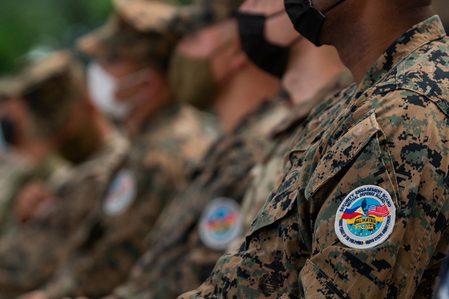SUMMARY
This is AI generated summarization, which may have errors. For context, always refer to the full article.
![[OPINION] EDCA: The bumpy road to restoring the PH-US alliance](https://www.rappler.com/tachyon/2023/02/tl-edca.png)
After a six-year hiatus, the PH-US alliance is finally back on track. During the visit of Defense Secretary Lloyd Austin last February 2, both parties announced their agreement to complete the construction of the five original sites and to designate four new sites, in accord with the Enhanced Defense Cooperation Agreement (EDCA). Based on the statement of former AFP Chief of Staff, Gen. Bartolome Bacarro last year, the new sites may be any of the following: two in Cagayan, and one each in Palawan, Zambales, and Isabela. All accordingly situated in areas critical to operations in the West Philippine Sea (WPS).
For the Philippines, a stronger US presence in the country will hopefully generate a push back against the CCP’s maritime forces operating within the West Philippine Sea. Critical to the credibility of the alliance would be developing a coordinated response to break the ongoing blockade around the Scarborough and Ayungin Shoals. Another is reestablishing sustained naval presence in our exclusive economic zone (EEZ) through joint patrols.
In the final selection of the new sites, hopefully those needed in the maritime theater of operations are prioritized. If an unsolicited proposal is to be made, the following should be in the list:
- Naval Operating Base Subic, to build a support facility for frigates, corvettes, and patrol vessels, as well as storage of its missiles and torpedoes;
- In Fuga Island, Cagayan, to expand the current naval detachment for a larger Marine contingent and an aerodrome to support air operations;
- In Busuanga and Balabac Islands, both in Palawan, to set up facilities for control of the Mindoro and Balabac Straits;
- In Northern Luzon and Palawan, to build hardened facilities for the Marine Corps’ Bhramos anti-ship missiles; and,
- A joint maritime information fusion center, for intelligence exchange, coordinating patrols, and tracking Chinese maritime traffic within the WPS.
For the United States, EDCA’s and the country’s strategic value was best articulated by former President Trump, who described the archipelago as a “prime peace of real estate” because of its location. Looking back, a “power vacuum” in the South China Sea was the unintended consequence of the US bases’ withdrawal in the 1990s. Like fallen chess pieces, Mischief Reef was occupied in 1996, the Scarborough Shoal was closed off in 2012, China’s occupied isles and features in the Spratlys Group were improved starting in 2013, and now the Ayungin Shoal and Sandy Cay are being blockaded. Gradually the Chinese Communist Party’s (CCP) with its navy, and today, its coast guard and fisheries militia dominated the South China Sea.
In this agreement, Taiwan is the “elephant in the room.” Understandably, the country is averse to any involvement with Taiwan’s concerns. Unfortunately, the CCP has already exposed its interest in the northern Luzon, with Taiwan in mind. Using foreign direct investment (FDI) as subterfuge, it went after Fuga, Grande, and Chiquita Islands, attempted a take-over of the ex-Hanjin Shipyard, and tried to participate in the Sangley International Airport project. For China, all these are vital to its Taiwan strategy. In other countries, it has adeptly used the Belt and Road Initiative (BRI) for its maritime ambition in the Indo-Pacific.
On a last note, the ambiguity of the agreement is disconcerting. The joint statement of secretaries Austin and Galvez is heavy on the hype, but wanting on the substance. One can almost discern vacillation from our side, and seeming reluctance to offer a concrete commitment to the alliance. Perhaps they are distracted by the “whispers” coming from the Chinese embassy or the contrarian narrative peddled by the latter’s “talking heads.” If so, they should draw strength from no less than President Marcos, who recognizes the importance of the alliance and other partnerships, in traversing the region’s troubled waters geopolitical and economic waters; and support of 84% of Filipinos believed government should work with the US to defend its sovereignty in disputed waters, according to a recent Pulse Asia survey. At the end the day, the Constitution, our national interest and the “people’s will” that serves as the guard rails to national security policies. – Rappler.com
Rear Admiral Rommel Jude Ong (Ret.) is currently Professor of Praxis at Ateneo School of Government. He was formerly the Vice Commander of the Philippine Navy.
Add a comment
How does this make you feel?

There are no comments yet. Add your comment to start the conversation.